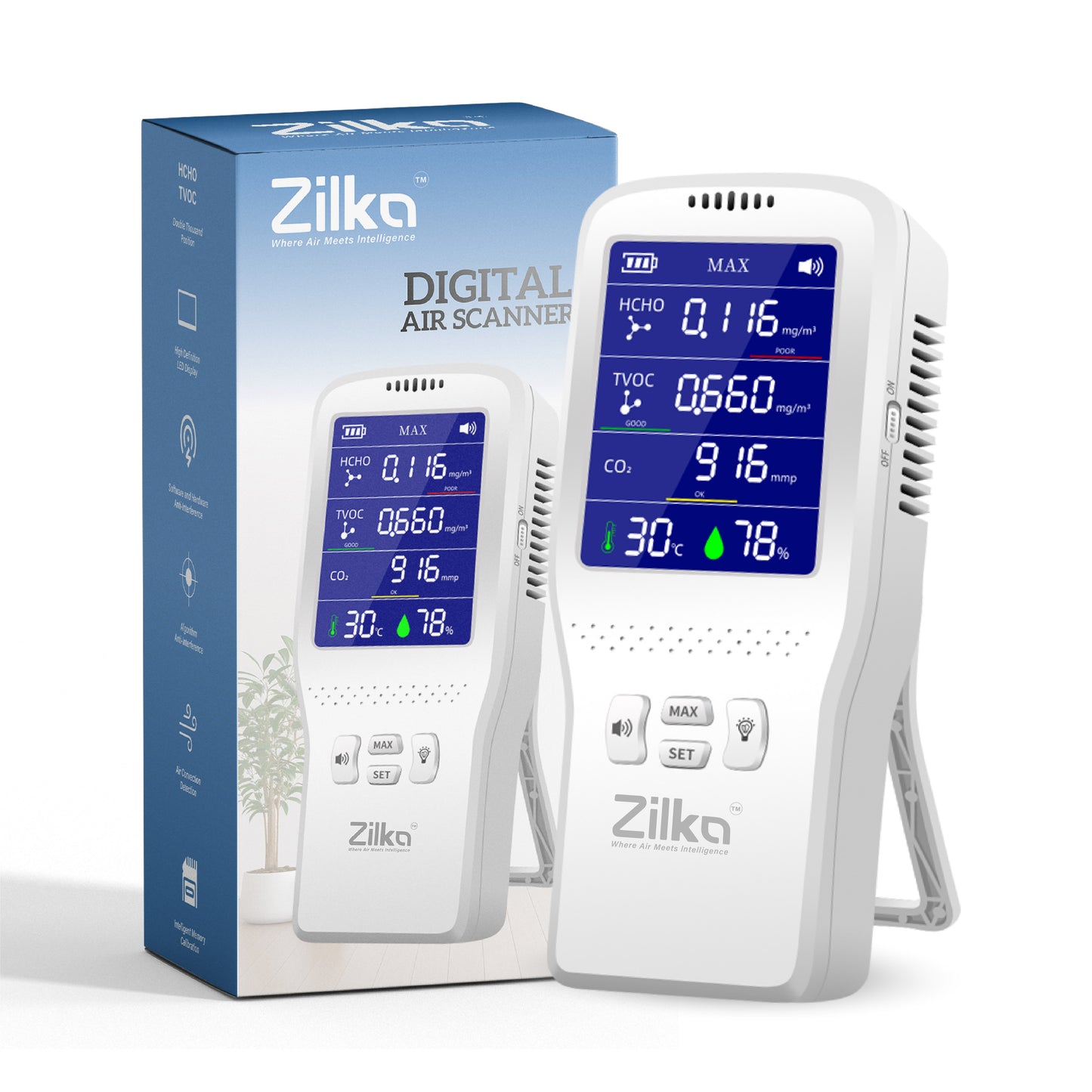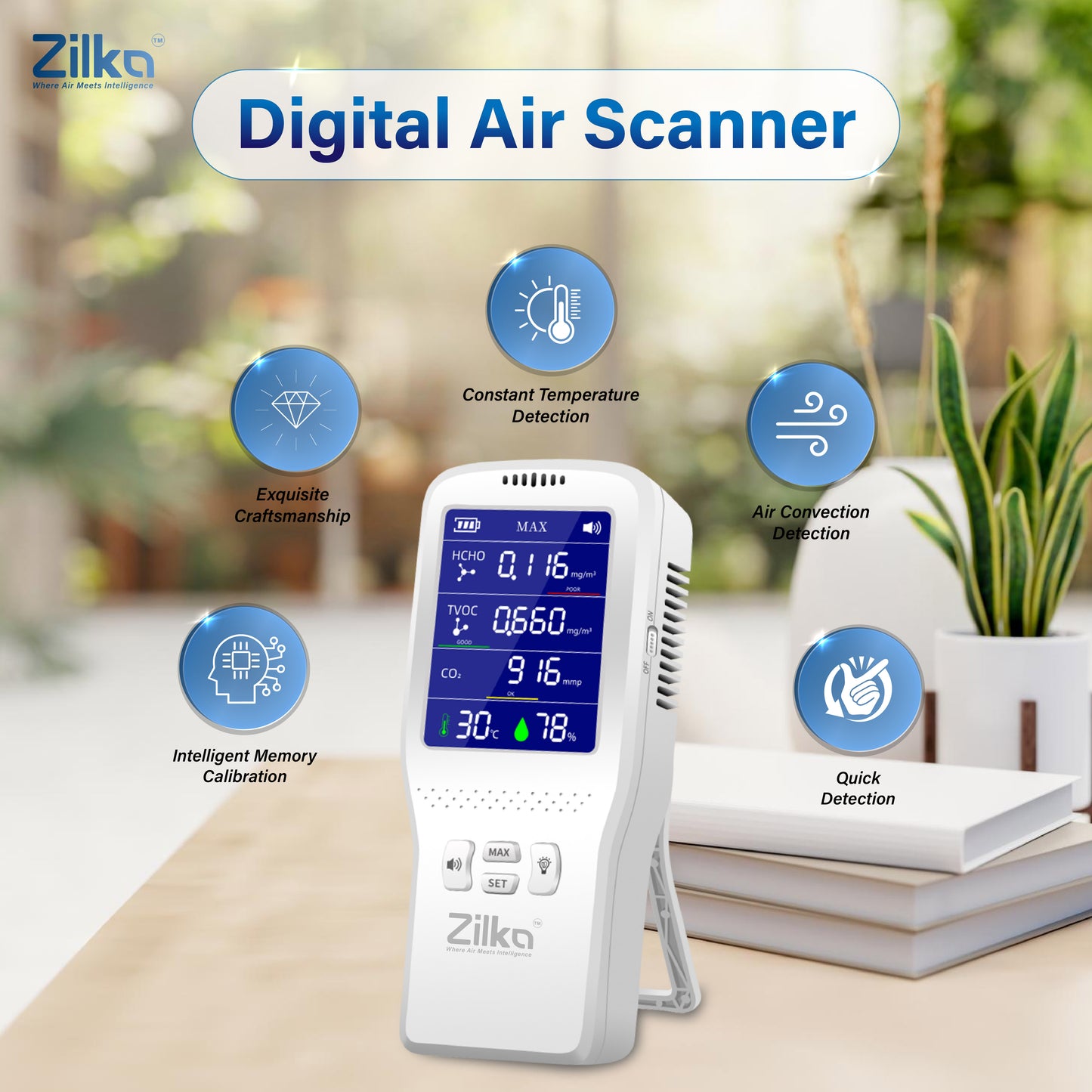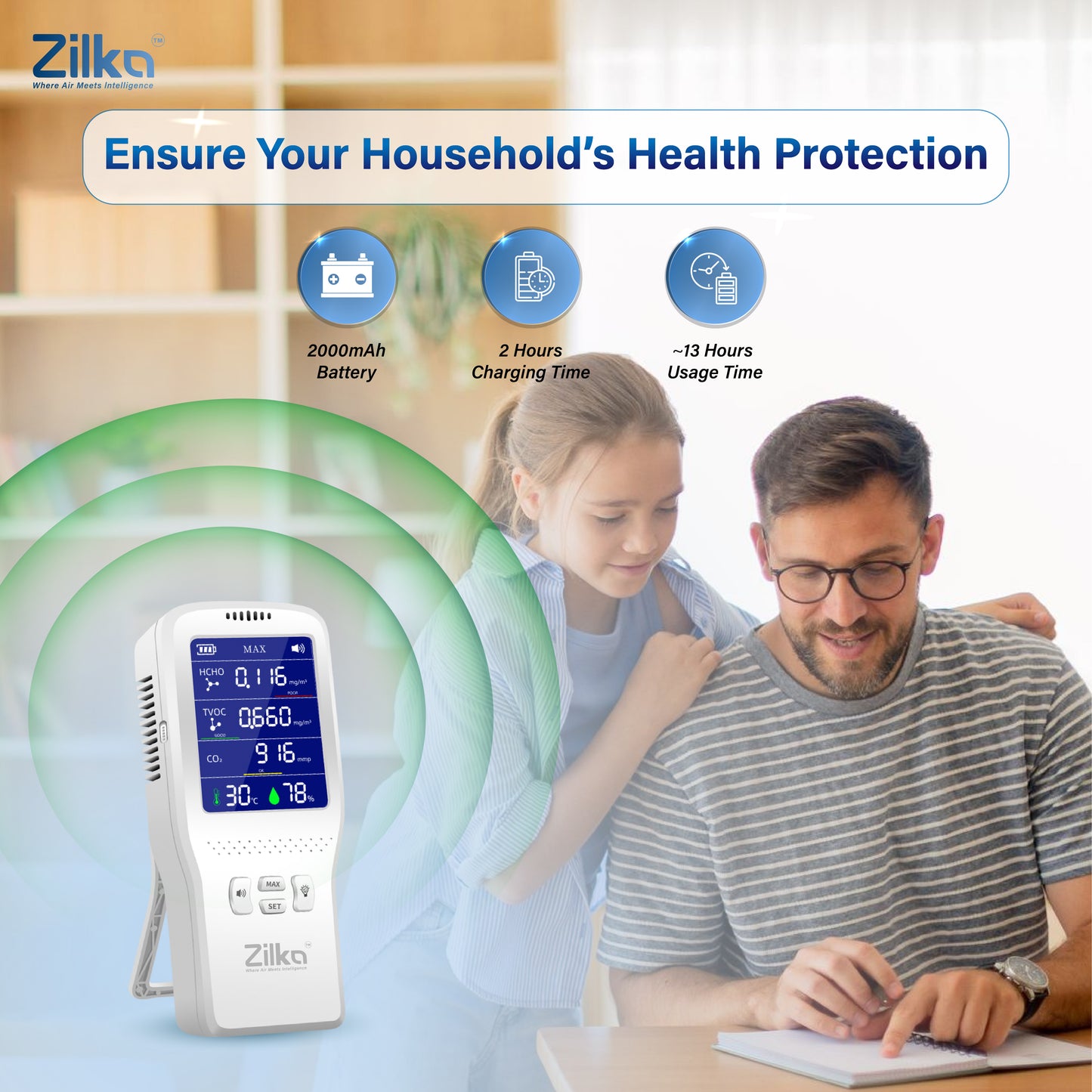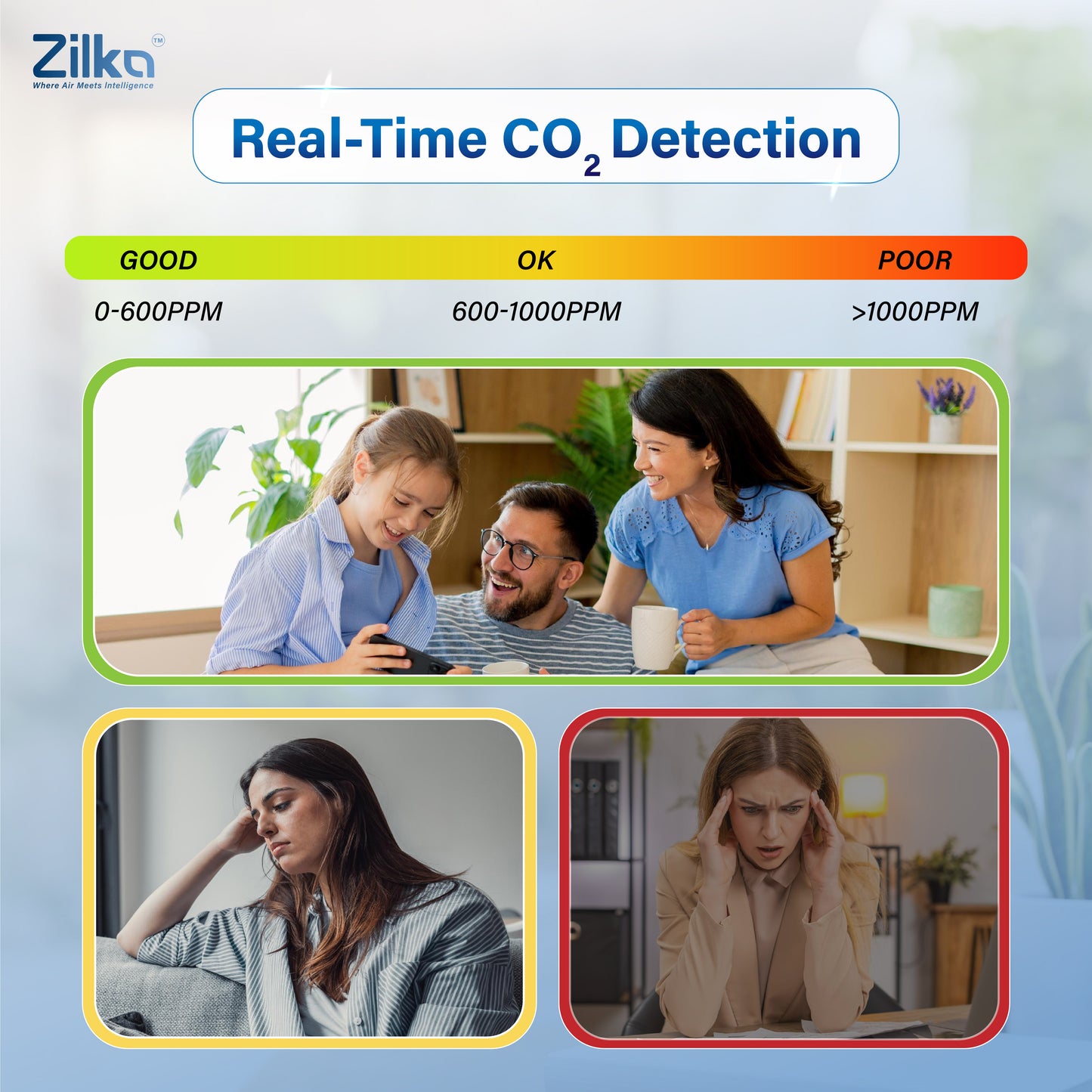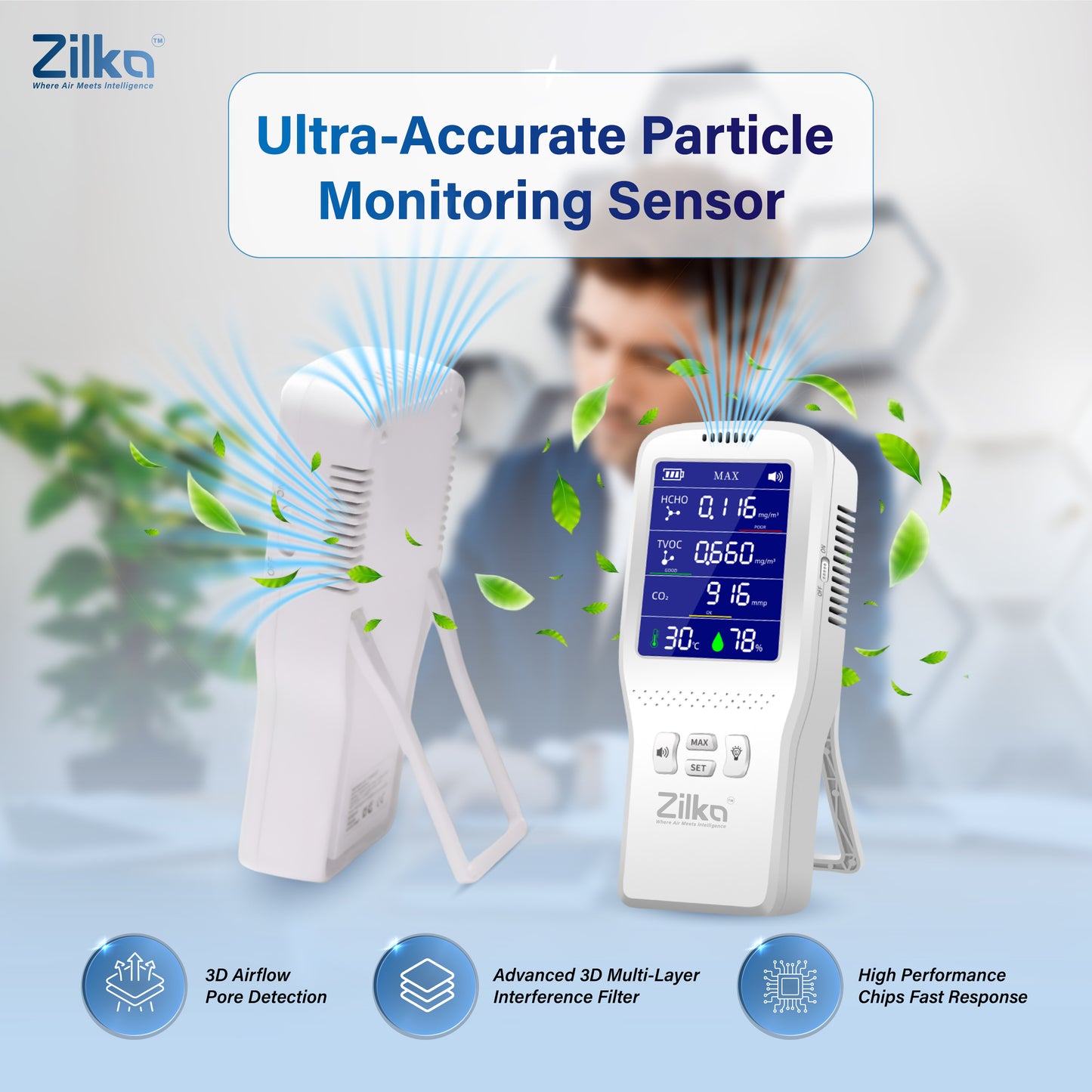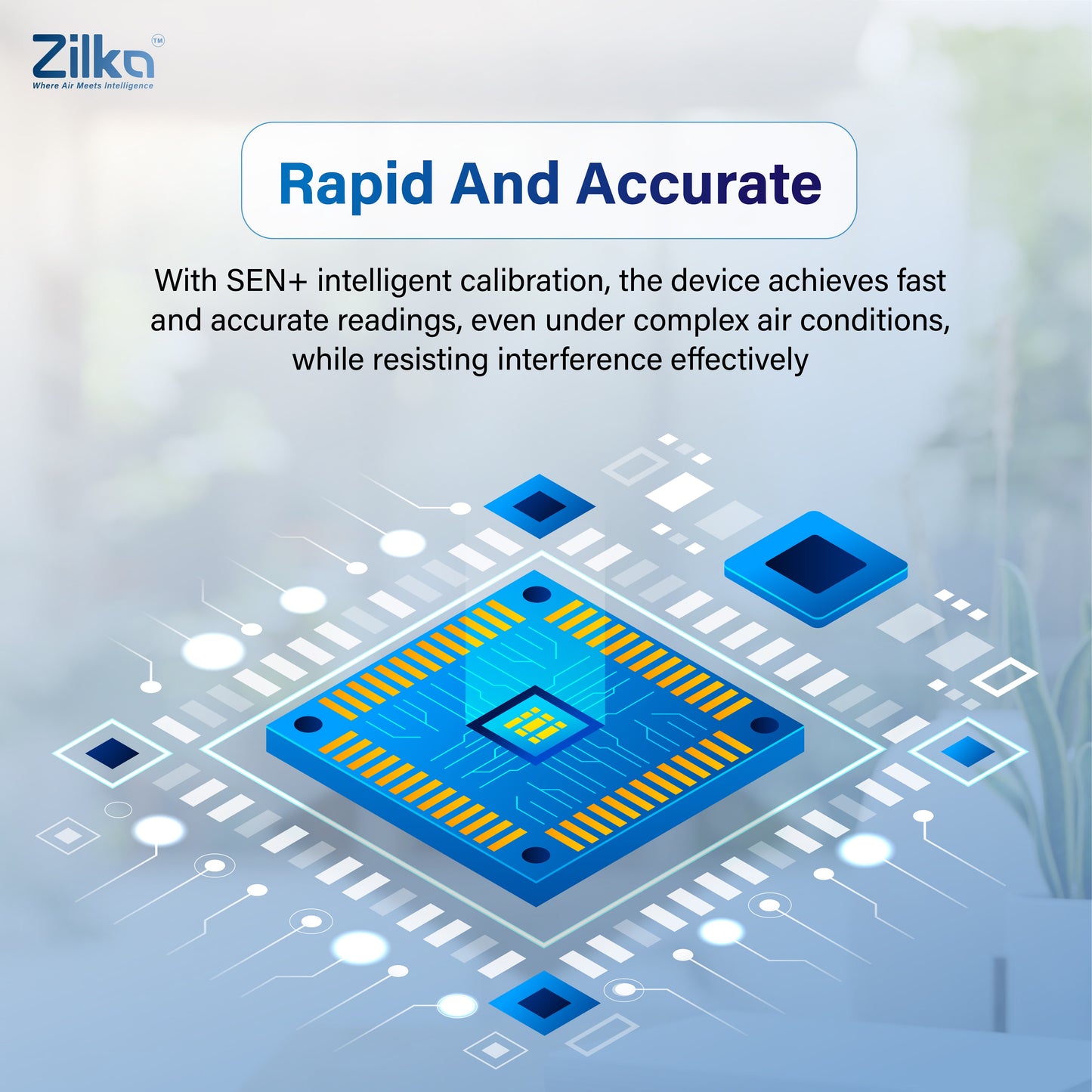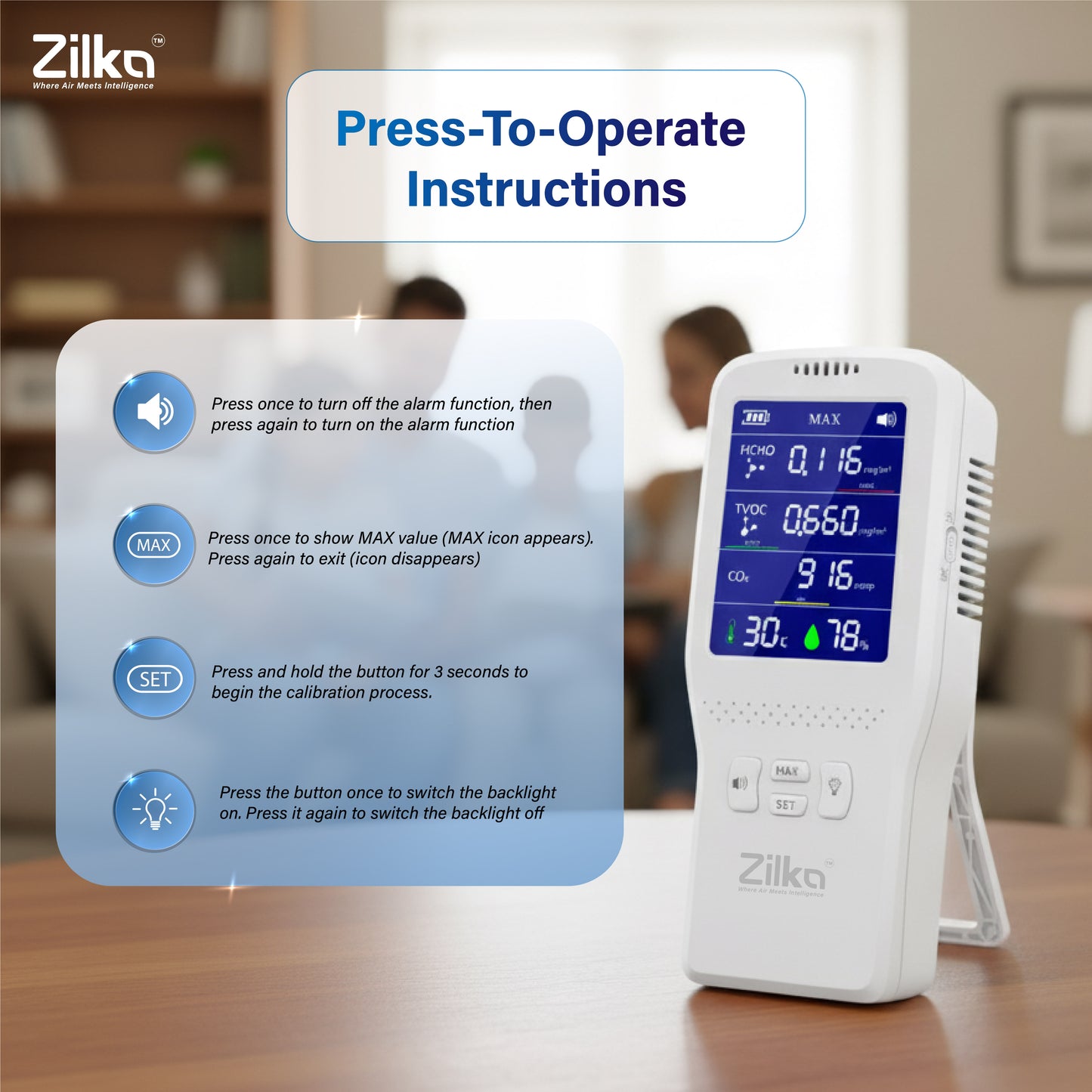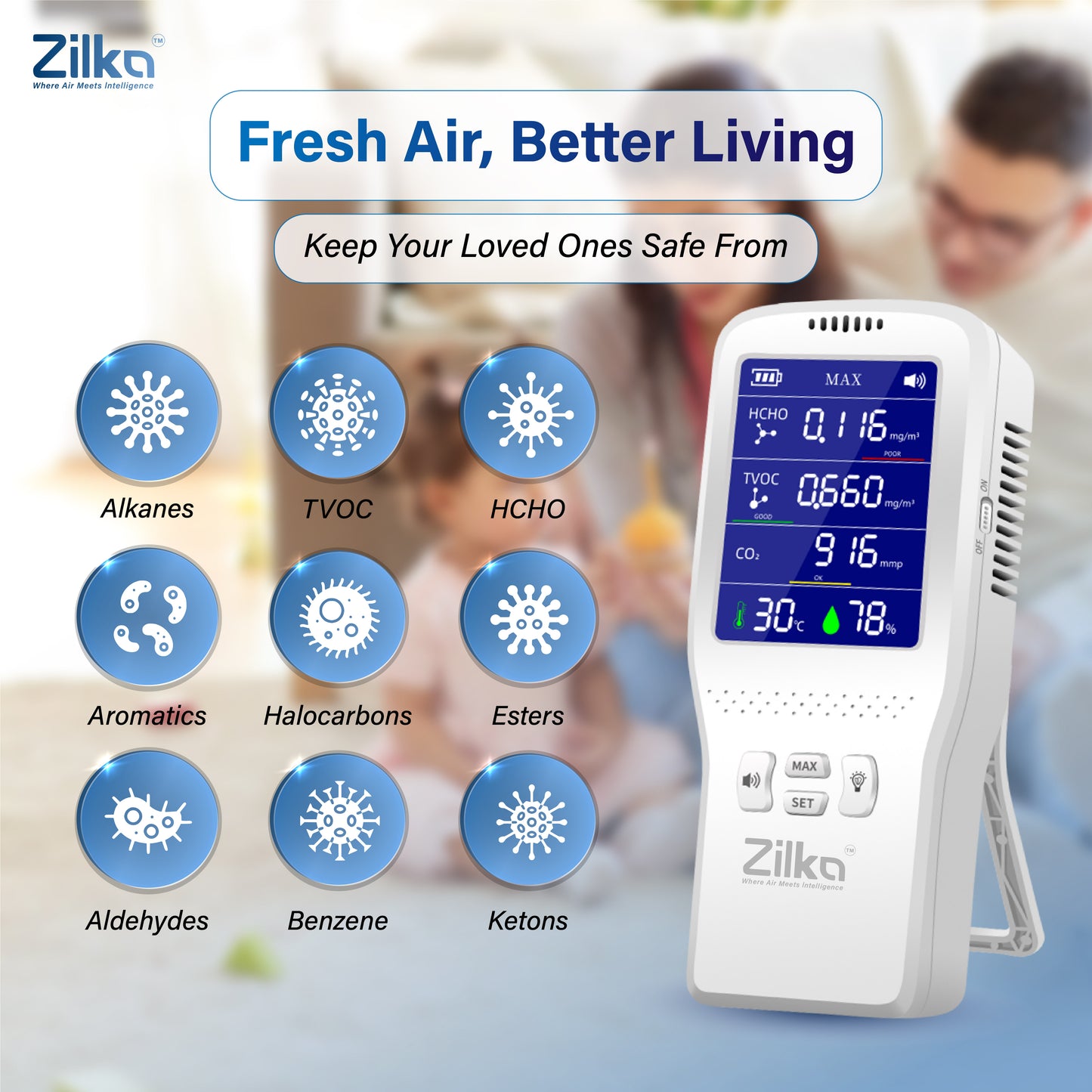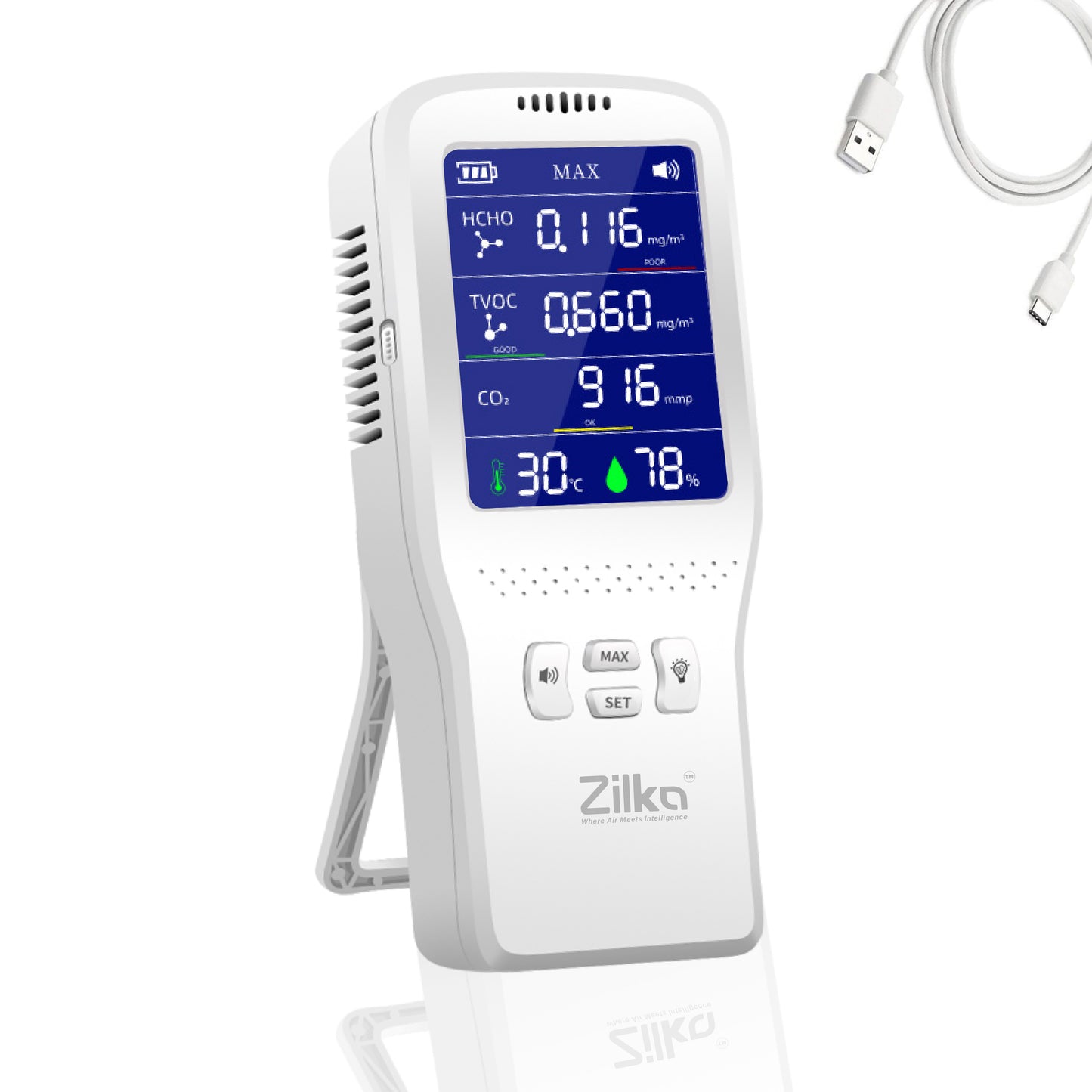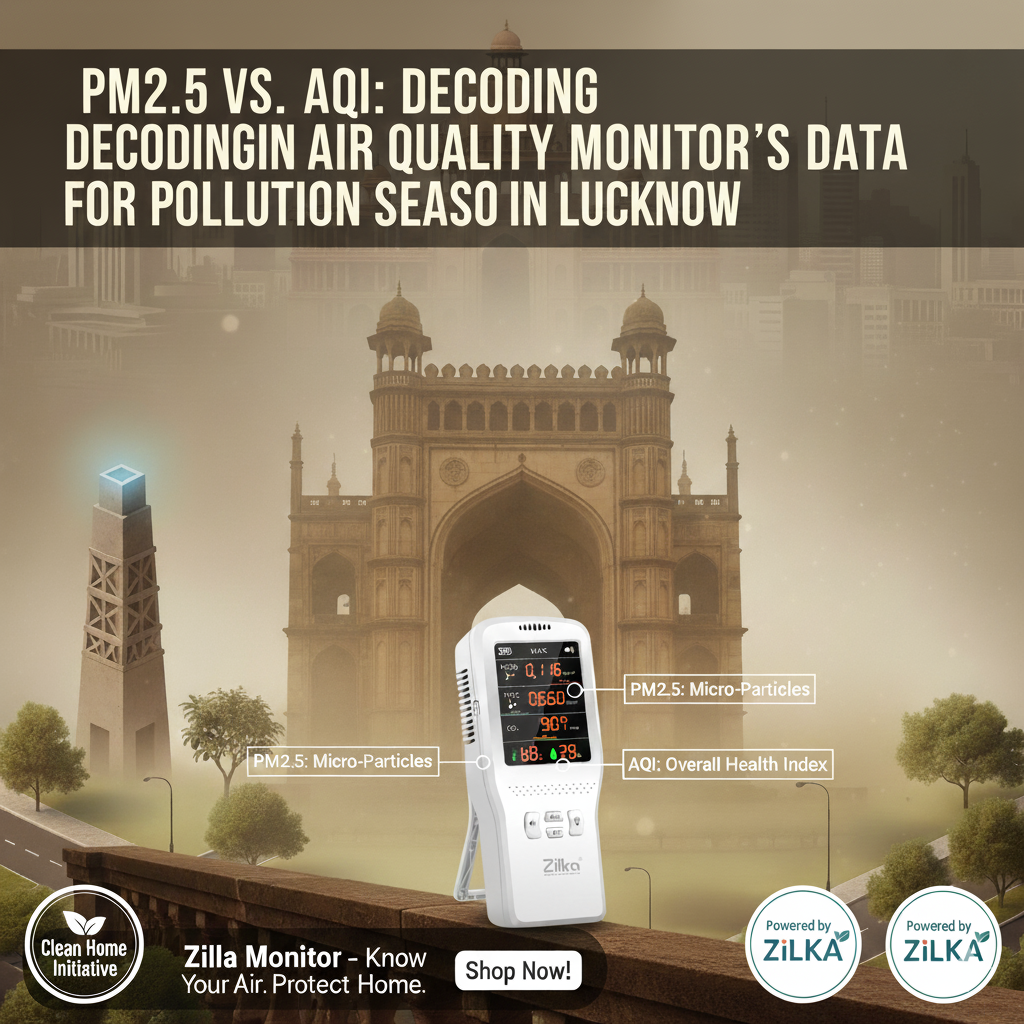
PM2.5 vs. AQI: Decoding Your Air Quality Monitor's Data in Lucknow - Air Quality Index - AQI
As a resident of the beautiful city of Lucknow, you are no stranger to the winter haze that descends upon the Indo-Gangetic plain. You see the city's overall AQI (Air Quality Index) on the news, but when you get your own indoor air quality monitor, you're faced with new numbers: PM2.5, TVOC, CO2. What do they actually mean for your family's health?
Let's decode the data.
AQI is the "City's Report Card": The AQI you see for Lucknow is a single number calculated from multiple pollutants over a large area. It tells you if it's generally safe to go outside. It's the big picture.
Your Monitor is the "Doctor's Diagnosis": Your indoor monitor gives you a specific diagnosis for the air inside your home, which is often very different.
-
PM2.5 (Particulate Matter <2.5 microns): This is the most dangerous pollutant in Lucknow's smog. These are microscopic particles from smoke, dust, and vehicle exhaust that can enter your bloodstream.
-
What to watch for: The WHO guideline is for an annual average below 5 µg/m³. Inside your home, you should aim to keep it below 12-15 µg/m³. During a bad smog day, seeing it at 150 inside is a major red flag.
-
-
TVOC (Total Volatile Organic Compounds): These are chemical gases from paints, deodorants, agarbatti, and cleaning agents.
-
What to watch for: There isn't a single number, but your monitor will often show a qualitative reading ("Good," "Moderate," "Poor"). If it's consistently poor, you have a chemical source indoors that needs to be addressed.
-
-
CO2 (Carbon Dioxide): This reading is your ventilation meter.
-
What to watch for: Outdoor air is ~400 ppm. A reading below 1000 ppm indoors is good. If it's consistently above 1500 ppm in your bedroom or study, the stale air is affecting your sleep and concentration.
-
Your Zilka 11-in-1 Air Quality Monitor turns you from a passive observer of the city's AQI into an active manager of your home's health. It empowers you to understand the specific threats inside your four walls and take targeted action.


